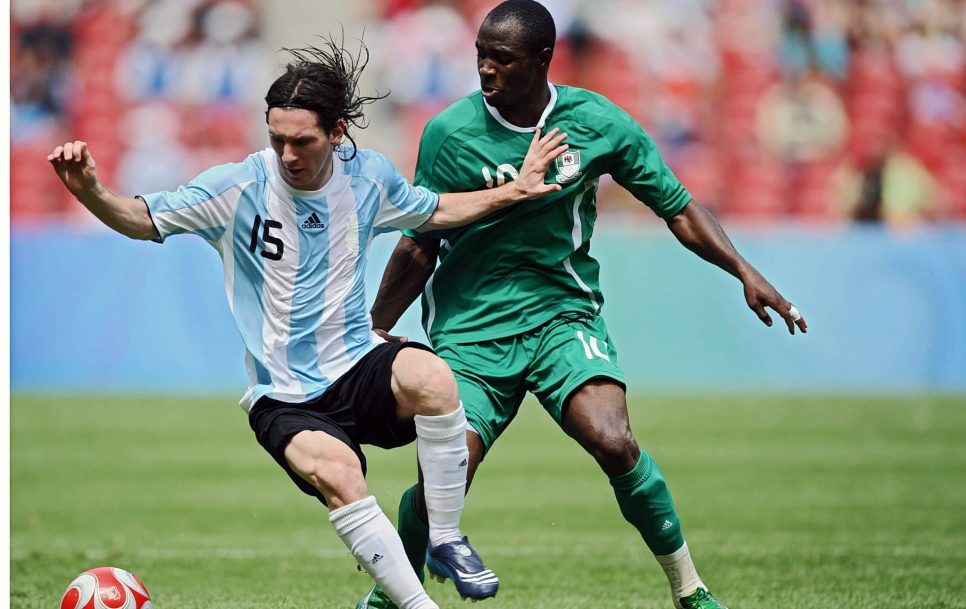Why is football not allowed to blossom at the Olympics?
While Spain was crowned the European champion in football on July 14th, the quest for the new Olympic champion begins on July 24th. In most sports, an Olympic gold medal holds the highest prestige, but football diverges from this norm.
This is because the Olympic tournament primarily features football players under the age of 23, with each team allowed a maximum of three older players. But why does this rule exist at the biggest sporting event of the summer? The short answer is money. The longer answer…
Football has been integral to the Olympic program since 1900, initially organized by local federations such as the English Football Association for the 1908 London Games. However, by 1924, the International Football Federation (FIFA) took charge of these responsibilities.
Emphasis on the World Cup
The football tournaments at the 1924 Paris and 1928 Amsterdam Olympics were immensely popular, prompting FIFA, under Jules Rimet’s leadership, to establish its own competition – the World Cup – in 1930.
FIFA’s efforts to promote this new tournament led to football being withdrawn from the 1932 Olympics. By the 1936 Berlin Games, FIFA and the International Olympic Committee (IOC) reconciled, recognizing their interdependence.
Back then, the Olympics strictly adhered to Pierre de Coubertin’s ideals, allowing only amateurs to compete. But as professionalism gained traction in football, the best players became ineligible for the Olympics.
The Eastern Bloc dominance
That was excellent news to the Eastern Bloc as most top athletes there were state-sponsored, enabling them to compete in the Olympics. This led to the Soviet Union and its satellites dominating the Olympic football from 1948 to 1980.
To illustrate this dominance: of the 28 medals awarded during this period, 23 went to Eastern European countries, with only Sweden (gold in 1948 and bronze in 1952), Denmark (bronze in 1948 and silver in 1960) and Japan (bronze in 1968) breaking their dominance.
At the 1984 Los Angeles Games, the IOC decided to allow professional soccer players to compete. However, FIFA was still opposed to the best players participating in a tournament that could rival the World Cup.
Experimenting with rules
Thus, a compromise was reached: while non-European and non-South American teams could field their strongest players, UEFA and CONMEBOL countries, who had won all the World Cups up to that point, were restricted to those who had not played in a World Cup.
Similar rules applied at the 1988 Olympics, with a slight modification for European and South American teams: footballers who had previously played less than 90 minutes in one single match of the World Cup, were now eligible.
By 1992, with national teams from other continents also gaining strength, FIFA introduced the U23 rule, turning the Olympics essentially into a youth tournament. The IOC, recognizing the need for football, simply had to agree to this…
But it did lead to a further compromise for the 1996 Games, allowing each team to include three over-23-year-old players, a rule that still stands today.
FIFA protects the World Cup
FIFA’s protection of the World Cup is financially motivated as overlapping player participation could diminish the tournament’s prestige and revenue. For instance, the 2022 World Cup in Qatar reportedly generated $7.5 billion for FIFA.
While we might not like the U23 rule, it does ensure excitement: e.g. it allowed Nigeria and Cameroon to win Olympic gold in 1996 and 2000, respectively. Notable players who shone for African countries include Jay-Jay Okocha, Nwankwo Kanu, Celestine Babayaro and Samuel Eto’o.
In recent years, Olympic football has resembled traditional game more closely, with Argentina (twice), Mexico and Brazil (twice) winning the gold since 2004.
Who are the favourites?
Defending champions Brazil will not participate in Paris, but their arch-rivals Argentina will lead the charge. Spearheaded by Manchester City star Julian Alvarez, Argentina boasts a formidable attack. Head coach Javier Mascherano has also called-up veterans Nicolas Otamendi (Benfica) and Geronimo Rulli (Ajax), solidifying their status as gold medal contenders.
They will face strong competition from France and Spain. The hosts, coached by Thierry Henry, will feature Alexandre Lacazette (Lyon), Jean-Philippe Mateta (Crystal Palace) and Loic Bade (Sevilla).
Spain, on the other hand, will rely on Juan Miranda (Real Betis), Abel Ruiz (Braga) and Sergio Gomez (Manchester City), along with recent European champions Fermin Lopez (Barcelona) and Alex Baena (Villarreal).
Other teams may not be as star-studded, but they still have notable players. Guinea has former Liverpool player Naby Keita (Werder Bremen), Morocco has PSG’s Achraf Hakimi, the Dominican Republic has former Barcelona player Junior Firpo (Leeds United) and Egypt has Arsenal’s Mohamed Elneny.
Groups and Schedule
Paris Olympics football tournament will have the following groups:
Group A: France, USA, Guinea, New Zealand
Group B: Argentina, Morocco, Iraq, Ukraine
Group C: Uzbekistan, Spain, Egypt, Dominican Republic
Group D: Japan, Paraguay, Mali, Israel
Teams in each group play one another in a round-robin basis, with the top two teams of each group advancing to the quarter-finals. In the knockout stage, if a match is level at the end of normal playing time, extra time is played (two periods of 15 minutes each) and followed, if necessary, by a penalty shoot-out to determine the winner.







